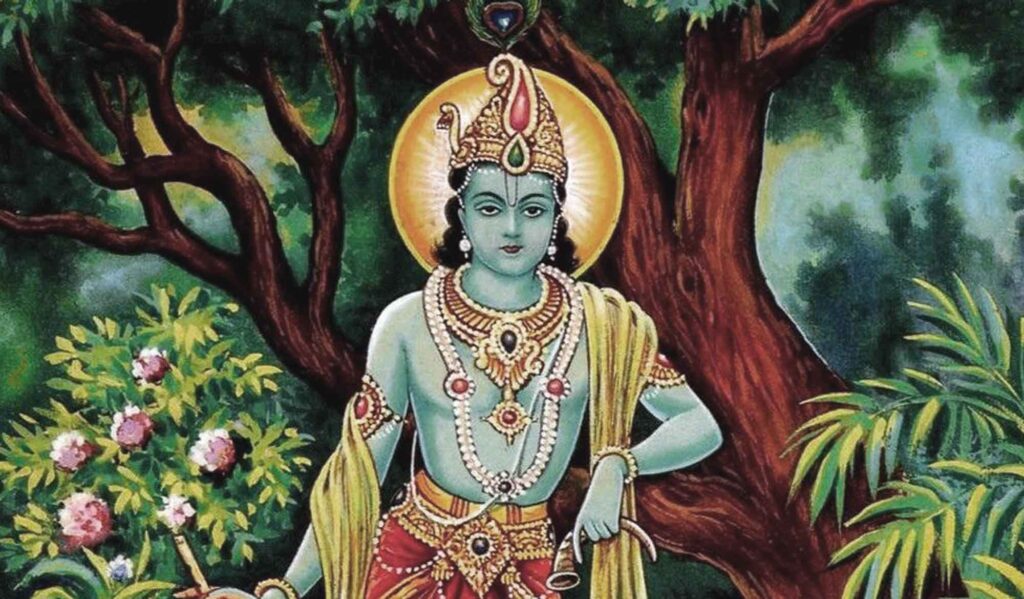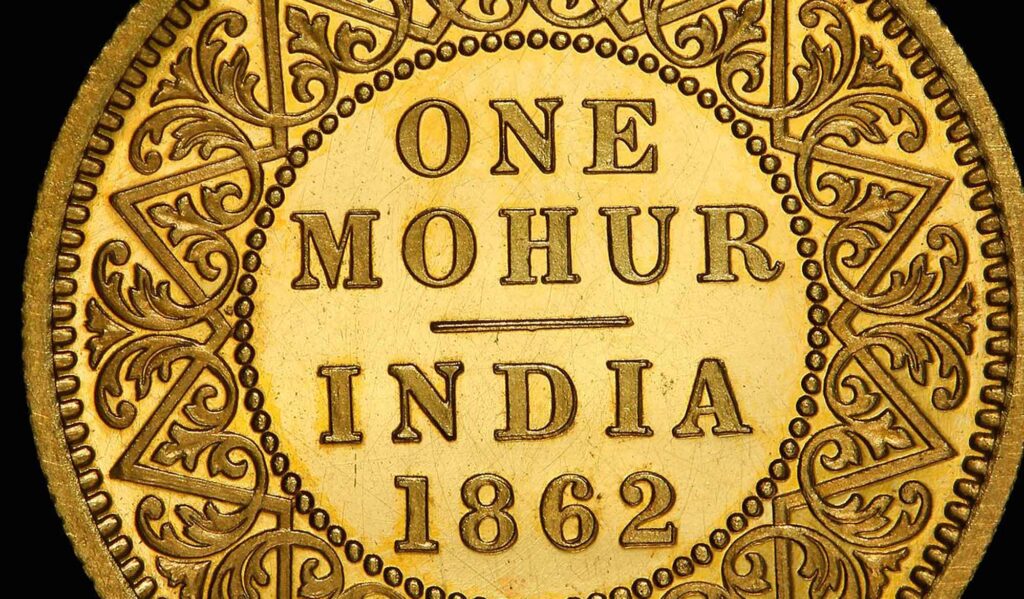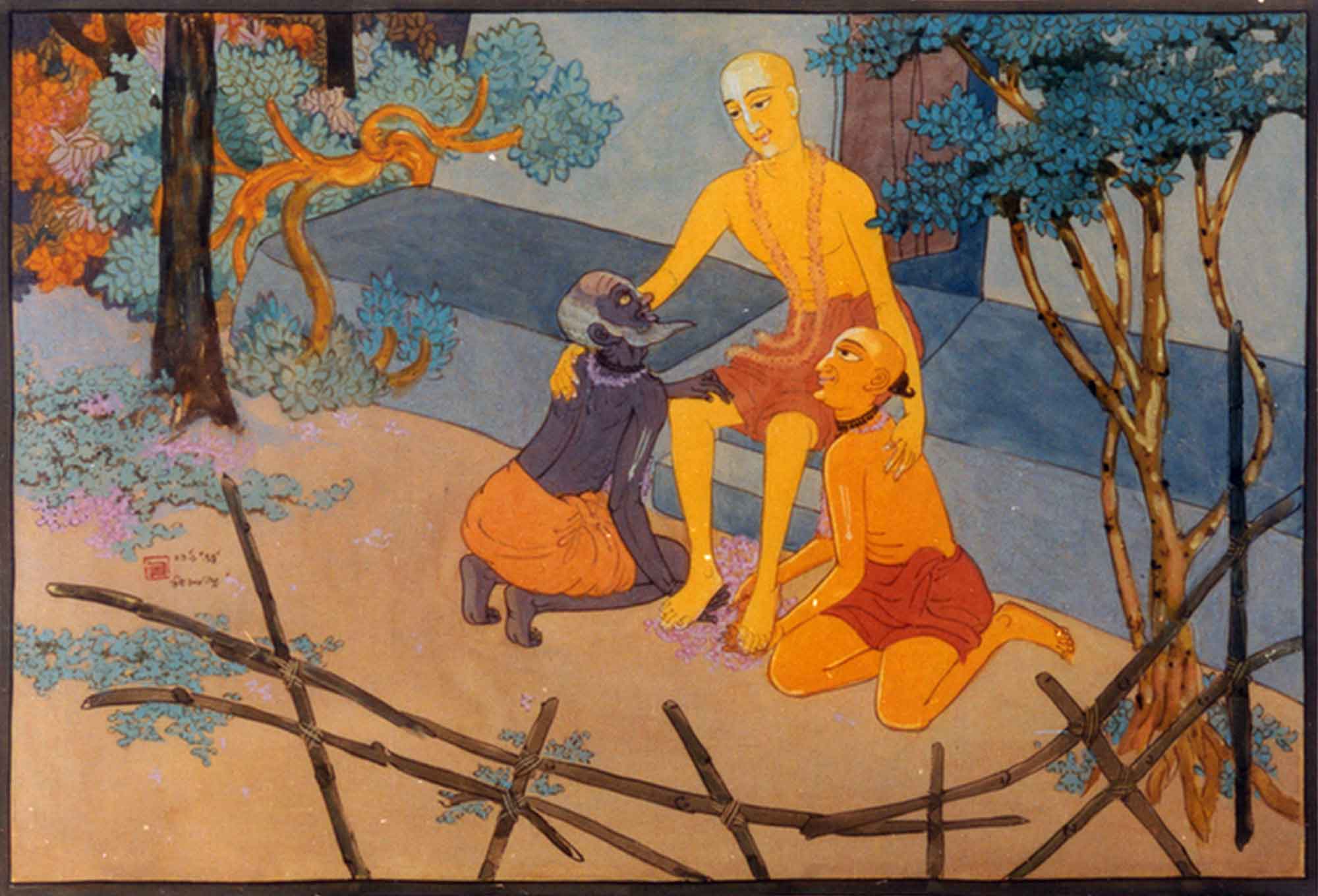Overview
Śrī Gaura Kṛṣṇa Abheda (The Non-Difference Between Śrī Gaura and Kṛṣna) was written by Bhaktivinoda Ṭhākura for Sajjana Toṣaṇī, Vol.11, issue 6 in 1899. In this article, Śrīla Bhaktivinoda Ṭhākura describes how Gaurāṅga and Kṛṣṇa are identical, and how one cannot simply worship Gaura and reject Kṛṣṇa as some persons were doing at the time.
(translated by Swami B.V. Giri)
Nowadays some people think that in the age of Kali, apart than Śrī Gaurāṅga, there is no other way. There is no other type of worship except for remembering His Name and worshiping his mantra. According to them, śrī-kṛṣṇa-nāma-kīrtana and śrī-kṛṣṇa-bhajana are not necessary. This topic is not only being preached in the city of Kolkata, but in many, many places.
It is absolutely true that in the age of Kali, there is no other way apart from Gaura. It is true that for those who perform kṛṣṇa-bhajana according to the smārta or tāntrika doctrines, prema does not arises from their bhajana. The kṛṣṇa-bhajana of the smārtas and tāntrikas totally lacks sambandha–jñāna and therefore their bhajana is actually bhajana–virodhi (averse to real bhajana). It can only be said that if one does not engage in kṛṣṇa-bhajana by taking refuge at the feet of Śrī Gaurāṅgadeva, one will never attain the ultimate goal of human life. Before the time of Śrī Gaurāṅga’s appearance, Śrīman Mādhavendra Purī and others performed bhajana of Śri Kṛṣṇa. Their bhajana was completely full of divine love. Although the external manifestation of Śrī Gaurāṅgadeva had not taken place then, bhāva for the Lord had appeared within their hearts.
However, after the appearance of Śrī Gaurāṅga, those who appeared in the Lord’s līlā and performed kṛṣṇa-bhakti were extremely blessed. The unprecedented appearance of śrī-kṛṣṇa-tattva within the character of Śrī Gaurāṅga has never been seen before. In the age of Kali, those who take shelter of the feet of Śrī Gaurāṅga and perform kṛṣṇa–bhajana are the most blessed in the world. It is an extremely unfortunate thing that on the pretext of following Śrī Gaurāṅga, those whose philosophy is to reject the bhajana of Śrī Kṛṣṇa, do not actually follow Śrī Gaurāṅga’s instructions.
There is no difference between Gaura and Kṛṣṇa. Those who think that if they take shelter of Gaurāṅga’s feet they will no longer have to remember Kṛṣṇa, are observing a difference between Gaura and Kṛṣṇa. There is no difference between kṛṣṇa-līlā and gaura-līlā, both līlās are identical. In kṛṣṇa-līlā, the subject of one’s bhajana is revealed, in gaurāṅga-līlā, the method of that bhajana is revealed. Trying to perform bhajana without a method, or engaging in the method without knowing the bhajana can never be complete. The more one reads about the character of Śrī Gaurāṅga, the more prema is there for kṛṣṇa-līlā. The more one reads about the līlā of Śrī Kṛṣna, the more gaura-līlā comes to mind. By rejecting Kṛṣna, one rejects Gaura, and by rejecting Gaura, one rejects Kṛṣṇa – this is never a good proposal. When one believes that Gaura is supremely worshipable, then the kṛṣṇa-līla of Śrī Gaurāṅga fully emerges.
Although all these topics are most confidential, they are being revealed with great sadness. “We will worship Gaura, and we will not remember Kṛṣṇa!” – such words are to be counted amongst the most depraved. Similarly, “I will worship Kṛṣṇa, but I will not remember Gaura!” – this too must be said to be the greatest misfortune. Śri-gaura-līlā and śri-kṛṣṇa-līlā are mutually intertwined as the supreme nectar for the jīvas of Kali-yuga. By assessing with a little intelligence, Gaura and Kṛṣṇa will seem to be one with each other. This verse of the Śrīmad Bhāgavatam should always be remembered –
kṛṣṇa-varṇaṁ tviṣākṛṣṇaṁ sāṅgopāṅgāstra-pārṣadam
yajñaiḥ saṅkīrtana-prāyair yajanti hi su-medhasaḥ
(“In the age of Kali, the Supreme appears with a non-blackish complexion, chanting the Names of Kṛṣṇa, accompanied by His associates, servants, weapons, and intimate companions. Those who are wise worship Him through the process of saṅkīrtana.” – Śrimad Bhāgavatam 11.5.32)
Who is Śrī Gaurāṅga? He that is Gaura, He is also Kṛṣṇa – Kṛṣṇa Himself has become Gaura, and He Himself is tasting kṛṣṇa-rasa and teaching that to the jīvas. The worship of Gaura without Śri Kṛṣṇa is a new practice here, and it is not approved by Gaurāṅga. Please see how the devotees of Śrī Gaurāṅga have worshipped; understanding who was the very prāṇa-svarūpa (the embodiment of life) for Śrī Gaurāṅga, they satisfied Him through śrī-kṛṣṇa-saṅkīrtana. Those who understand the upāsana-tattva (science of worship) found in Śrī Caitanya-caritāmṛta have absolutely no doubt about this. By disregarding all the previous teachings of the Gosvāmīs, we will have to say that those who are exclusively ‘gauravādīs’ have created a new path.
Some great personalities can see all bhajana-siddhis (the perfection of bhajana) only within Gaurāṅga. “Kṛṣna became Gaura, and we are eternally situated amongst Gaurāṅga’s associates” – with this in mind, they have expressed their own emphatic devotion, but such bhajana cannot be observed by ordinary devotees – only by those devotees with exceptional devotion. But all those devotees who were engaged in their own firm devotion, never gave contradictory teachings to those devotees fixed in the non-difference of Gaura and Kṛṣṇa, and they themselves were also immersed in kṛṣṇa-saṅkīrtana. We can only say that this new kind of gaura-bhajana is not a proper philosophy. There is no fault in constantly chanting the name of Śrī Gaurāṅga, but not by forbidding kṛṣṇa-bhajana. It seems to be the result that only through gaura-bhajana specifically can one later become fixed in kṛṣṇa-bhajana by the mercy of Gaurāṅga.













